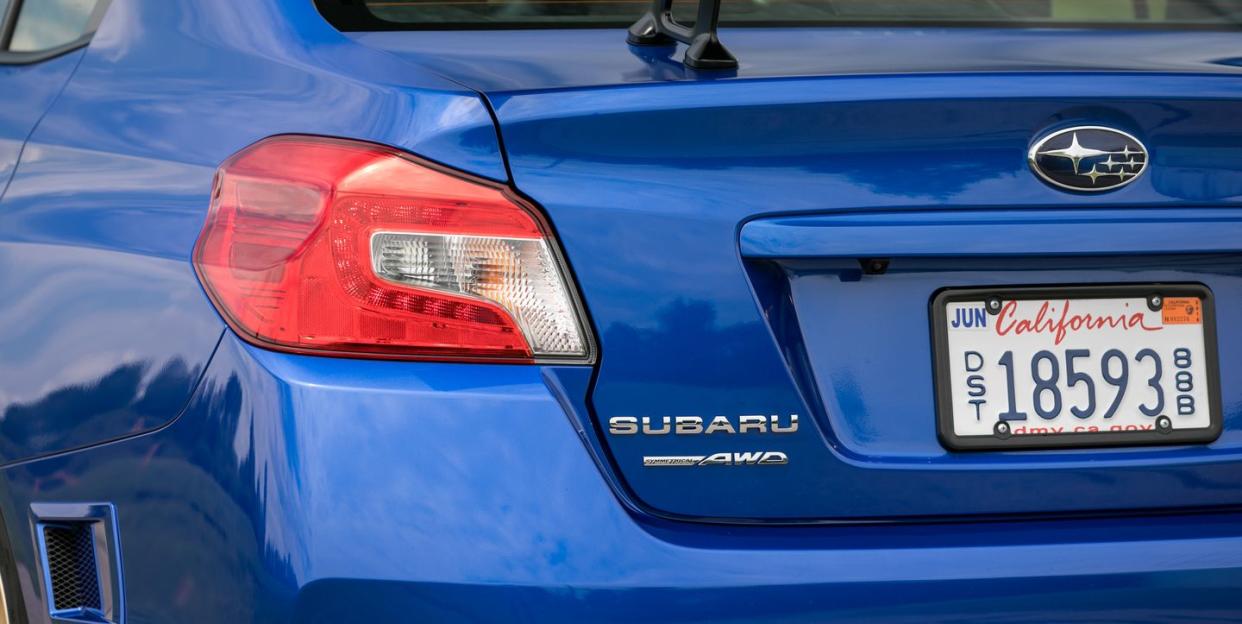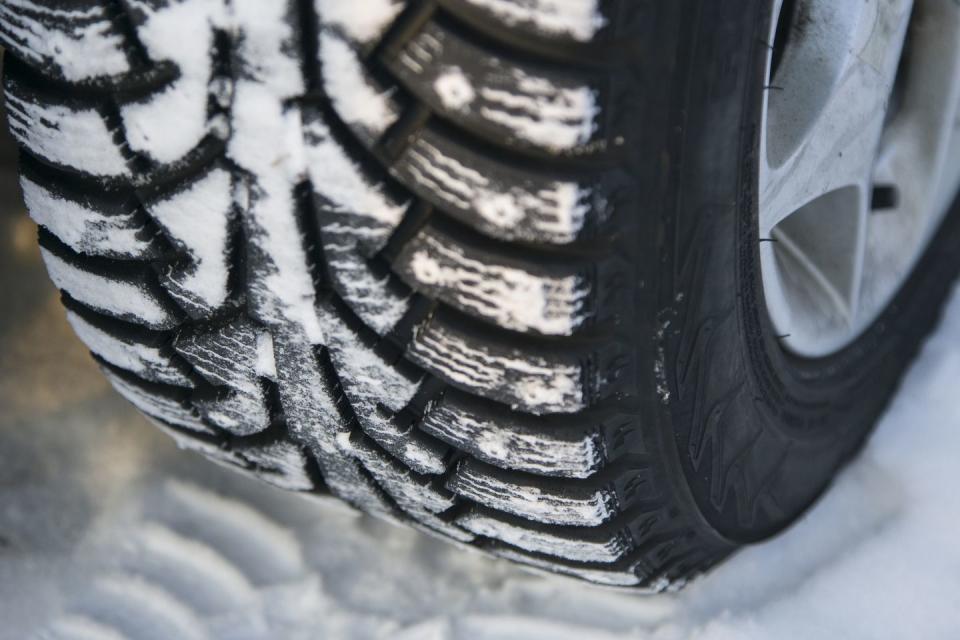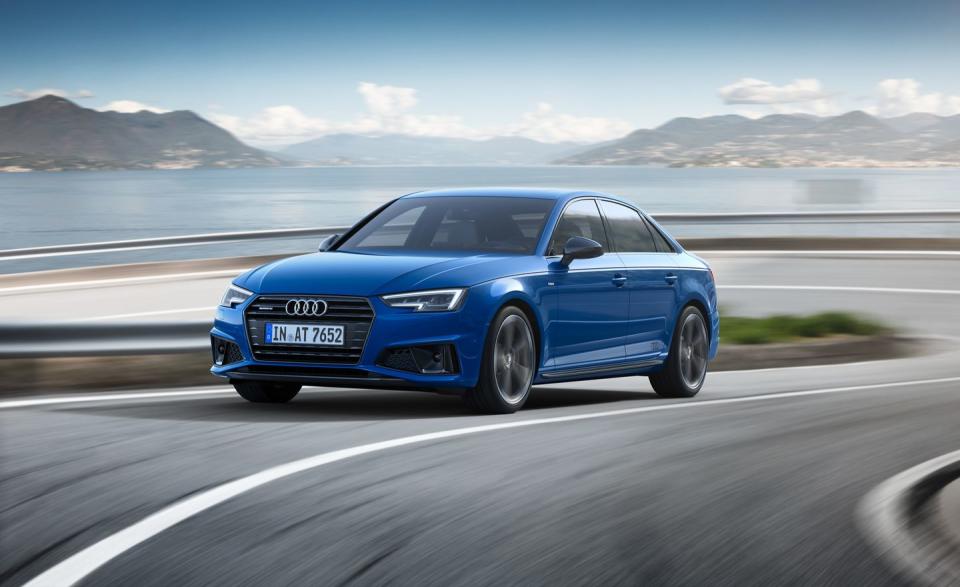Why You Might Want an All-Wheel-Drive Sedan—Or Not

Drivers who live with snowy weather know all too well that road conditions can create significant driving challenges. Spinning your wheels, fishtailing, trouble getting going on hills—winter driving is so much fun, isn't it? If you frequently face this kind of anxiety-producing weather and you're in the market for a sedan, maybe you should think about purchasing one that's equipped with all-wheel drive (AWD).
Is an AWD sedan right for you? To answer that question, you should know exactly what AWD is, what it can and can't do for you, and the different types of AWD systems on the market. What's more, most of the perceived benefits of AWD are better addressed with appropriate tires.
What Is All-Wheel Drive?
Most of today's passenger cars are of the front-wheel-drive variety. This type of system sends the engine's torque solely to the vehicle's front wheels. Rear-wheel drive is commonly found in trucks, truck-based SUVs, performance cars, and luxury sedans, and it turns the car's rear tires.
With AWD, torque is sent to all four wheels. The advantage in getting moving in slippery conditions is obvious. Since AWD turns four wheels instead of just two, there's that much more grip, and when the available traction is very low—as on snow and ice—you can accelerate better, with less or even no tire slippage. The vehicle feels stable and doesn't slip or fishtail in a way that makes your heart beat faster. In almost any slippery situation, an AWD sedan is able to accelerate from rest better than one with front-wheel drive or rear-wheel drive that's rolling on identical tires—though there are exceptions.
AWD Isn't 4WD
All-wheel drive is different from four-wheel drive. By our definition, four-wheel-drive vehicles use systems that can't vary the individual axle speeds, meaning you cannot drive them on dry streets and roads. Do so and the axles will bind—remember, your vehicle's inside wheels turn slower than the outside wheels when you go around a corner—and the car will hop awkwardly around tight turns. All four-wheel-drive systems are intended for part-time use only. They are designed for driving off-road or when the roads are extremely slippery. At all other times, these vehicles must be driven in tw0-wheel drive.
AWD systems are not a panacea, however. Like any technology, AWD comes with certain advantages and drawbacks.
Pros and Cons of AWD Sedans
Pro: Better Traction in Slippery Conditions
An AWD sedan will accelerate on slick roads significantly better than a car with two-wheel drive. If there's snow, ice, or mud on the road, it will be more difficult for a two-wheel-drive car's wheels to get a good purchase when you're accelerating. This could cause the vehicle to lose traction and slip and slide unnervingly. At worst, you might get into a skid that sends you off the road or into another car. An AWD system improves a car's ability to accelerate safely and without drama through all types of precipitation.
Pro: Less Chance of Spinning When Exiting a Corner
AWD doesn't automatically improve handling on dry pavement in and of itself. It depends on the vehicle. More and more high-powered, high-performance cars are using AWD for its ability to harness big horsepower without spinning the tires.

Just as it does in snow, an AWD system's ability to deliver torque four ways and feed it to four tires, rather than two, reduces any individual tire's tendency to spin when accelerating in a straight line or while powering through a corner. This means faster acceleration from rest with less burned rubber and, for expert drivers who push their cars hard, the confidence to hit the accelerator in a corner with less chance of slewing sideways or, worse, spinning out.
Con: A False Sense of Security in Wintry Conditions
This is the big issue that drivers of AWD sedans need to learn to deal with—and some learn it the hard way. In snow and slush and on icy roads, AWD reduces wheelspin whenever you're trying to accelerate, but it has no effect on a car's ability to stop or turn in those same poor conditions. AWD sedans neither stop nor turn any better than their two-wheel-drive cousins. Drivers tend to judge winter traction based on how easily a car's wheels spin when they push the throttle. Does the car wiggle, fishtail, or feel unstable? If it does, you naturally slow down.
But because AWD greatly reduces wheelspin when accelerating, it's easy to overestimate how much traction there is and drive too fast for the conditions. Do that and you might find yourself sailing off the outside of a corner or through an intersection when trying to stop for a red light.
Con: Increased Cost and Complexity
In many cases, AWD is offered as an option, and it can raise a vehicle's price by thousands of dollars. However, some automakers offer this feature as standard equipment—though the extra cost of AWD components (at least one extra differential, various clutches, a driveshaft, software, and more) is baked into the sticker price. Also, the complexity of an AWD system can increase service and repair costs down the road. Audi and Subaru are known for offering models that come standard with AWD.
Con: Winter Tires vs AWD
Here's the AWD conundrum: An AWD sedan on all-season tires has significantly less traction for turning or braking on snowy roads than a front- or rear-wheel-drive sedan does on a set of four winter (snow) tires. We proved as much in a Car and Driver winter-tire test that we conducted several years ago, where we showed that winter tires are superior in those two key driving situations. What about in a head-to-head acceleration test? Would the AWD car pull ahead?

We have not tested how well an all-wheel-drive sedan on all-season tires can accelerate on snow versus a two-wheel-drive car fitted with winter tires, so we consulted the experts at Tire Rack, who conduct extensive snow testing. In a drag race on snow, says Woody Rogers, Tire Rack's director of testing information, "I can make the outcome go either way depending on which all-season tires I fit to the AWD car." The most snow-friendly all-seasons would give the AWD sedan the advantage, Rogers believes. But in terms of cornering and braking traction, Tire Rack agrees with the results of our own testing: AWD offers no improvement.
Then there's the matter of cost: fitting a two-wheel-drive sedan with a set of winter tires and extra wheels is in many cases less expensive than the extra cost of an AWD system. (And running a set of winter tires also extends the life of your summer tires.) Here at Car and Driver, we fit a set of winter tires to all our long-term test cars for winter driving, even if they're AWD models. As we have seen firsthand, an AWD sedan with a set of winter tires is a killer winter ride.
Con: Worse Fuel Economy
Because an AWD system adds weight and creates parasitic driveline losses, in most cases it will diminish its fuel economy—though the fuel-economy penalty may be so small it doesn't even show on the EPA combined figures. For example, according to EPA estimates, the 2019 Chrysler 300 3.6-liter V-6 sedan achieves fuel economy of 23 mpg combined (19 mpg city/30 mpg highway) with its standard rear-drive layout. With optional AWD, mileage dips to 21 mpg combined (18 city/27 highway). For some vehicles, the difference can be as little as 1 mpg or less, according to the EPA. The Mercedes C300 coupe, in fact, posts identical EPA fuel-economy ratings for both its rear-drive and AWD versions. Still, if fuel efficiency is of the utmost importance to you, then you might want to avoid AWD.

Types of All-Wheel-Drive Systems
Not all AWD systems work in the same way. There are three main types of AWD to consider:
Full-Time AWD
With full-time AWD, torque is always sent to all four wheels. This occurs whether the road is slippery or dry. Most full-time AWD systems split the torque evenly between the front and rear axles with the use of a center differential, though there are full-time systems that vary the amount of power sent to the front or rear wheels depending on available traction. Other full-time AWD systems offer a fixed torque split, usually with a rear bias to better mimic the behavior of a rear-drive car. Subaru uses this system in its vehicles equipped with manual transmissions, including the Impreza sedan. But manufacturers are moving away from this system to a more sophisticated type of full-time AWD that incorporates automatic engagement capability.
Full-Time with Automatic Engagement AWD
This is on-demand AWD. Under normal circumstances, torque is delivered to just one axle and its pair of wheels. The system automatically detects tire slippage and, in that instance, sends torque to the second axle on wet or wintry roads. Think of these AWD systems, which are by far the most common on the market, as providing an "assist" axle supplying extra traction when you need it and not when you don't. On slippery roadways, when the wheels propelling the car start to spin, clutches automatically engage to direct torque to the formerly dormant pair of wheels to boost traction. Since it's not driving all four wheels in all driving situations, on-demand AWD tends to offer slightly better fuel economy than a full-time AWD system. Some on-demand systems are calibrated to engage in order to improve handling when the vehicle is switched to a sport mode or if the vehicle is being driven aggressively. You can find on-demand AWD systems on most sedans that offer AWD, from the Nissan Altima to the Buick Regal and almost everything in between.
In the past few years, some manufacturers have also begun offering systems that allow the driver to fully deactivate the vehicle's assist axle and drive in two-wheel drive no matter the road conditions. In these systems, the axles and driveshaft that engage in AWD mode are disconnected, reducing their parasitic drag and marginally improving fuel economy.
To AWD or Not to AWD?
If you're interested in finding a capable AWD sedan, there's no shortage of choices to consider. Several of the recommended sedans on our Car and Driver Editors' Choice list are available with this feature. You'll find AWD offered in family sedans such as the Subaru Legacy and luxury models such as the BMW 5-series. It's easy to find an AWD sedan; the hard part is deciding if you really need one.
You Might Also Like

